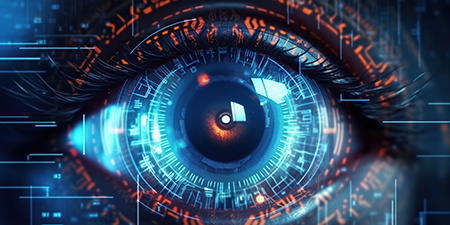Computer vision is a field of artificial intelligence (AI) and computer science that focuses on enabling computers to interpret and understand the visual world.
It involves developing algorithms and techniques that allow computers to acquire, process, analyze, and make decisions based on visual data from the real world.
Here are some key components and applications of computer vision:
- Image Acquisition: This involves capturing visual data from various sources such as cameras, videos, or other imaging devices.

- Image Processing: In this step, raw visual data is preprocessed to enhance quality, remove noise, and prepare it for further analysis.
- Feature Extraction: Computer vision algorithms extract relevant features from images, such as edges, shapes, textures, or colors, which are then used for higher-level processing.
- Object Detection and Recognition: This involves identifying and classifying objects within images or video streams. Object detection algorithms locate objects within an image and classify them into predefined categories.
- Semantic Segmentation: Semantic segmentation assigns a label to each pixel in an image, effectively dividing the image into meaningful segments corresponding to different objects or regions.
- Image Classification: In this task, algorithms assign a single label or category to an entire image based on its contents. For example, determining whether an image contains a cat or a dog.
- Visual Tracking: Visual tracking involves following the motion of objects over time in videos or image sequences. It's often used in applications like surveillance, sports analysis, and robotics.
- 3D Reconstruction: Computer vision techniques can reconstruct three-dimensional models of objects or scenes from multiple 2D images or video frames.
Applications of computer vision span a wide range of industries and domains, including:
- Autonomous Vehicles: Computer vision plays a crucial role in enabling vehicles to perceive and understand their environment, detect obstacles, and navigate safely.
- Medical Imaging: It's used for tasks like tumor detection, organ segmentation, and disease diagnosis from medical images such as X-rays, MRI scans, and CT scans.
- Surveillance and Security: Computer vision systems can monitor and analyze video feeds for tasks like face recognition, activity detection, and anomaly detection.#
- Retail and E-commerce: Applications include product recognition, shelf monitoring, and cashier-less checkout systems.
- Augmented Reality (AR) and Virtual Reality (VR): Computer vision enables AR and VR systems to overlay digital information onto the real world or create immersive virtual environments.
- Industrial Automation: It's used for quality control, defect detection, and robot guidance in manufacturing and assembly processes.
You can download and test the software nvision to test most of the computer vision like (Abslout Difference, Adaptive Threshold, Canny, Sobel, Gray Scale, Erode, ... )




